
Liqueur Marketing for Spirits Brands
The liqueur market has been experiencing remarkable market growth in recent years, driven by a myriad of factors, including changing consumer preferences and an evolving industry landscape. With a diverse array of liqueur – from whiskey and vodka to gin and other niche categories – market segmentation has become an essential tool for understanding the dynamics of this ever-changing sector. For brands looking to make their mark, developing effective liqueur marketing strategies will be crucial for success in this competitive landscape.

One of the key drivers of growth in the liqueur industry is the increasing popularity of craft spirits. These artisanal, small-batch beverages have captured the attention of discerning consumers who appreciate their unique flavors and production methods. Craft liqueur have not only expanded the market but also reshaped the industry landscape, with an increasing number of distilleries popping up across the globe.
Global trends, such as the rise of sustainability and premiumization, have also contributed to the industry’s growth. Consumers are increasingly demanding environmentally friendly and ethically produced spirits, leading many brands to adopt sustainable practices throughout their supply chain. Additionally, premium and luxury spirits such as brandy and cognac have seen a surge in popularity, with consumers willing to pay a premium for high-quality, exclusive beverages.
Innovative liqueur marketing strategies are essential for brands to stand out in this dynamic environment. By leveraging social media, content marketing, and influencer collaborations, brands can effectively engage with their target audience and build a loyal customer base. Furthermore, understanding the preferences of different market segments will enable brands to tailor their products and marketing campaigns accordingly.
The spirits industry’s future is bright, with continued market growth projected in the coming years. As the landscape evolves, those brands that stay ahead of the curve and adopt innovative alcoholic beverages marketing strategies will be well-positioned to thrive in this burgeoning sector.

liqueur Trends: Embracing Change
The alcoholic beverages industry is no stranger to change, with trends continually emerging and evolving. As consumer preferences shift, brands must adapt and innovate to stay relevant. Today, we explore the key trends shaping the future of liqueur and alcoholic beverages, from craft spirits and sustainability to premiumization and the rise of flavored liqueur and low-alcohol beverages.
Craft liqueur
Craft strong alcohol drinks and digestives have been making waves in the industry for quite some time, with consumers increasingly drawn to the unique flavors, artisanal production methods, and authentic brand stories that these small-batch beverages offer. This trend has led to a proliferation of independent distilleries and a diversification of the spirits market.
Sustainable liqueur
Sustainability is another significant trend in the spirits industry. Consumers are more environmentally conscious than ever before, seeking out brands that prioritize eco-friendly practices, from sourcing ingredients to packaging and distribution. Spirits marketing efforts that emphasize a brand’s commitment to sustainability can help to establish a strong, positive image in the minds of consumers.
Premium liqueur
Premiumization has also been a driving force in the liquer market. As consumers become more discerning and willing to pay a premium for high-quality beverages, luxury and premium spirits have experienced a surge in popularity. Brands that can successfully position themselves as lifestyle brands, offering not just a product but an experience, will have a competitive edge in this space.
Flavoring
Flavored liqueur have emerged as a popular choice for those seeking new and exciting taste experiences. From fruit-infused vodkas to botanical gins, these innovative products cater to a wide range of palates and preferences. Brands that can create unique and appealing flavor profiles will likely find success in this growing market segment.
Low-Alc.
Low-alcohol beverages have also gained traction in recent years, as health-conscious consumers look for alternatives to traditional alcoholic drinks. This trend has led to the development of a diverse range of low-alcohol and alcohol-free options, from sophisticated spirit alternatives to refreshing low-ABV cocktails.
To thrive in the ever-changing liqueur industry, brands must be adaptable and forward-thinking. By embracing these trends and incorporating them into their liqueur marketing strategies, companies can stay ahead of the curve and continue to grow and succeed in this dynamic market.
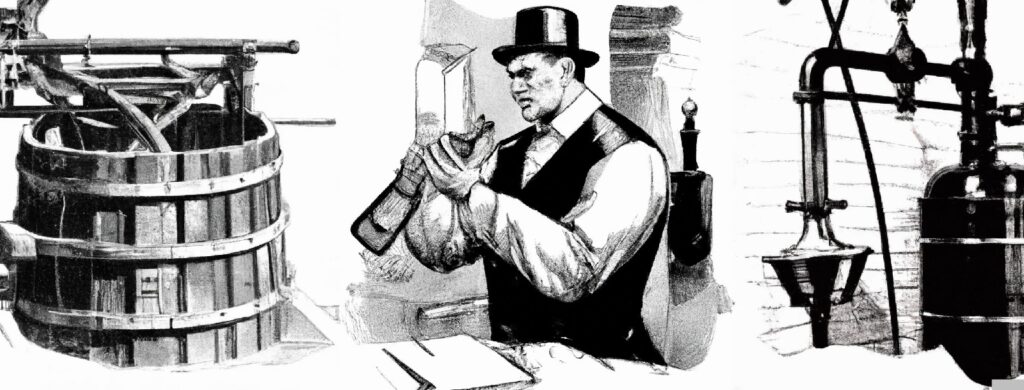
Consumer Behaviors in the liqueur Industry
Understanding consumer behaviors is essential for any brand looking to succeed in the spirits industry. From consumption patterns to taste preferences, demographic factors, and health consciousness, various elements shape the way consumers choose and enjoy drinks such as absinthe, grappa or mezcal. In this article, we delve into these factors to help brands develop effective liqueur marketing strategies that resonate with their target audience.
Consumption patterns vary widely among consumers, depending on factors such as age, income, location, and cultural background. For instance, while some consumers may prefer to enjoy spirits at home, others may opt for social drinking experiences at bars, restaurants, or events. Identifying these patterns can help brands tailor their marketing campaigns and product offerings to better align with consumer preferences.
Taste preferences play a significant role in the spirits industry, with consumers often drawn to specific flavor profiles and types of liqueur. Brands that can anticipate and cater to these preferences, offering innovative products that excite the palate, will be well-positioned to capture market share. Additionally, understanding how these preferences evolve over time can help brands stay ahead of emerging trends and maintain relevance.
Demographic factors, such as age, gender, and socioeconomic status, can also influence consumer behaviors in the liqueur industry. For example, younger consumers, particularly Millennials and Generation Z, have shown a penchant for experimenting with new flavors and types of spirits, driving the rise of craft spirits and flavored beverages. Brands that understand the nuances of different demographic groups can develop targeted alcoholic beverages marketing campaigns that effectively engage their audience.
Health consciousness is another factor shaping consumer behaviors in the liqueur industry. As consumers become more aware of the impact of their choices on their well-being, there has been a growing demand for low-alcohol and alcohol-free alternatives. Brands that can successfully meet this demand, offering products that cater to health-conscious consumers without sacrificing flavor or quality, will likely find success in this growing market segment.
Lastly, brand loyalty plays a significant role in consumer behaviors, with consumers increasingly drawn to companies that share their values and communicate a clear, compelling message. Brands that can foster a strong emotional connection with their audience, demonstrating their commitment to sustainability, social responsibility, or other shared values, can create lasting relationships and drive long-term success.
In conclusion, understanding the factors that shape consumer behaviors in the liqueur industry is crucial for developing effective spirits marketing strategies. By staying attuned to these dynamics, brands can better connect with their target audience, creating meaningful experiences that drive brand loyalty and long-term success.
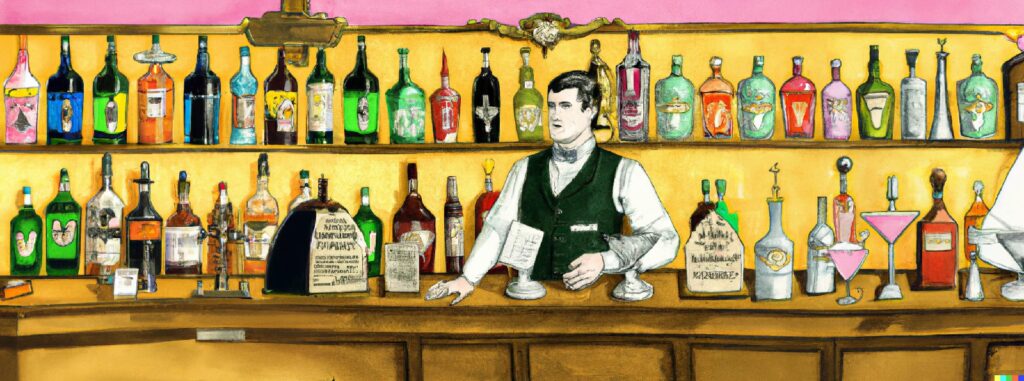
Buyer Personas of liqueur and Alcoholic Beverages
To develop effective liqueur marketing strategies, brands must have a deep understanding of their target audience. One way to achieve this is by identifying and analyzing buyer personas. In the context of the spirits industry, five distinct buyer personas emerge: the connoisseur, the collector, the experimenter, the casual drinker, and the social influencer. Each of these personas has unique motivations, interests, and preferences, making it essential for brands to tailor their marketing approach accordingly.
The Connoisseur
The connoisseur is passionate about liqueur and possesses a deep knowledge of the subject. They seek out high-quality, artisanal products and appreciate the craftsmanship and skill that goes into creating exceptional beverages. For this persona, spirits marketing should emphasize the unique production methods, premium ingredients, and the expertise behind the product. Brands that can cater to the connoisseur’s refined tastes and discerning palate will likely find favor with this discerning audience.
The Collector
The collector is driven by a desire to acquire rare, exclusive, or limited-edition liqueur. They often view their collection as an investment, with an appreciation for the history and heritage of the products they acquire. liqueur marketing targeted at the collector should highlight the exclusivity and scarcity of the product, as well as the brand’s storied history and the potential for long-term value appreciation.
The Experimenter
The experimenter is open to trying new and unique spirits, constantly seeking out novel flavors and experiences. They are drawn to innovative products, such as flavored spirits or unconventional production methods, and are likely to share their discoveries with friends and family. Spirits marketing for this persona should focus on the product’s unique selling points, appealing to their curiosity and sense of adventure.
“Too much of anything is bad, but too much good whiskey is barely enough.”
Mark Twain
The Casual Drinker
The casual drinker enjoys spirits on a more occasional basis, often in social settings or as a means of relaxation. They may have a few favorite brands or types of liqueur but are generally less knowledgeable about the industry. For the casual drinker, spirits marketing should emphasize the product’s versatility, ease of consumption, and compatibility with different occasions and settings.
The Social Influencer
The social influencer is a trendsetter, with a strong presence on social media and a knack for spotting and promoting the latest and greatest products. They have the power to shape consumer opinions and drive sales through their endorsements and recommendations. liqueur marketing for the social influencer should focus on creating visually appealing content, leveraging influencer partnerships, and offering exclusive experiences that can be shared with their followers.
By understanding these buyer personas and their unique preferences, brands can develop tailored spirits marketing campaigns that effectively resonate with their target audience. This targeted approach will not only help brands to stand out in the competitive liqueur market but also foster strong connections with their customers, driving long-term loyalty and success.
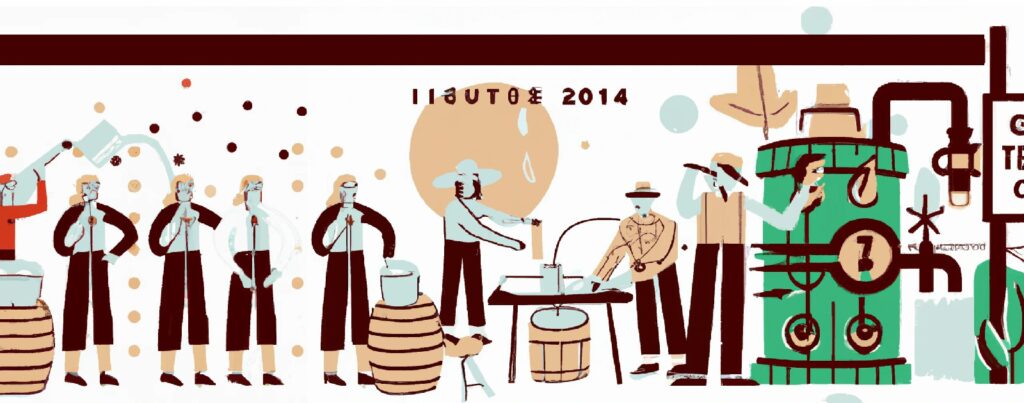
Innovative liqueur Brands: Pioneering the Future
Innovation is the lifeblood of gin, rhum and vodka, with brands continually pushing the boundaries to create unique, memorable products that capture the attention of consumers. In this article, we highlight five existing spirits brands that embody innovation and have successfully positioned themselves as lifestyle brands within the spirits marketing space.
Grappa Nardini
Grappa Nardini, an Italian brand with a rich history dating back to 1779, has expertly blended tradition with innovation. Their modern approach to grappa production, which includes using vacuum distillation, has resulted in a refined, high-quality product that appeals to both grappa enthusiasts and newcomers alike. Grappa Nardini’s commitment to sustainability and their use of striking, contemporary packaging have also helped to differentiate the brand in the competitive markets of scotch, brandy and sake.
Sipsmith Gin
Sipsmith Gin, a pioneering craft gin brand based in London, has played a significant role in the resurgence of gin’s popularity. Their dedication to small-batch production and the use of traditional copper pot stills ensures a high level of craftsmanship in every bottle. Sipsmith has successfully leveraged spirits marketing to communicate their brand story, emphasizing their passion for quality, heritage, and innovation.
High West Distillery
High West Distillery, located in Utah, has made a name for itself with its unique approach to whiskey blending. By combining various aged whiskeys, they create innovative and complex flavor profiles that challenge traditional whiskey conventions. Their commitment to transparency, including revealing the source and age of each whiskey in their blends, has also earned them a loyal following among whiskey aficionados.
Seedlip
Seedlip is a game-changing brand in the liqueur industry, offering a sophisticated range of non-alcoholic spirits that cater to the growing demand for alcohol-free alternatives. By using high-quality, natural ingredients and a unique distillation process, Seedlip has created a product that can be enjoyed in the same way as traditional spirits, allowing consumers to enjoy a refined drinking experience without the alcohol content.
Kyrö Distillery Company
Kyrö Distillery Company, based in Finland, has built a reputation for its innovative approach to crafting spirits. They have successfully tapped into the growing popularity of rye-based spirits, creating a range of products that showcase the distinct flavor profile of Finnish rye. With an emphasis on local ingredients and a commitment to sustainability, Kyrö has positioned itself as a lifestyle brand that resonates with environmentally conscious consumers.
These five innovative alcoholic beverages brands have demonstrated the power of creativity, passion, and forward-thinking in the industry of whiskey, gin, vodka and grappa. By embracing innovation and effectively leveraging spirits marketing to communicate their unique brand stories, they have set themselves apart from the competition and paved the way for future success.
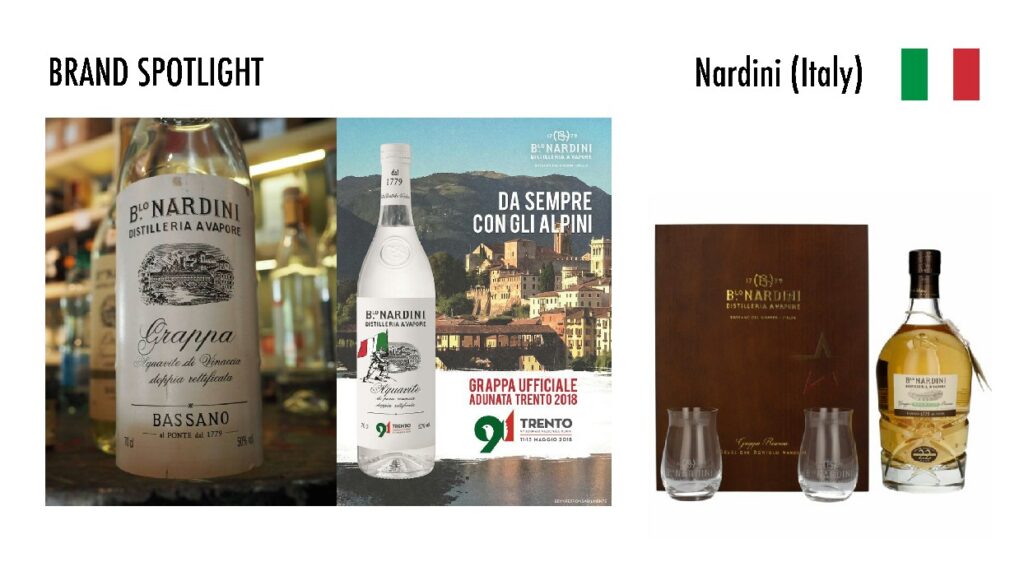
Marketing Strategies for Liqueur Brands
In today’s competitive liqueur industry, having a high-quality product is simply not enough. Brands must also employ innovative marketing strategies to differentiate themselves from the competition and create lasting connections with their target audience. In this article, we explore a variety of marketing approaches that spirits brands can adopt to build their brand, engage with consumers, and ultimately drive sales. From leveraging social media and storytelling to embracing sustainability and partnerships, these tactics will help brands craft a compelling narrative and stand out in the crowded alcoholic beverages market.
Embrace storytelling
A compelling brand story can create an emotional connection with consumers and foster a sense of brand loyalty. By sharing the history, heritage, and values that underpin the brand, liqueur companies can differentiate themselves from competitors and create a unique brand identity. To effectively communicate their story, brands should consider various channels, such as content marketing, video, and experiential events.
Leverage social media
Social media platforms offer a powerful means for spirits brands to engage with consumers, build brand awareness, and showcase their products. By creating visually appealing, shareable content, brands can tap into the power of social media algorithms to increase their reach and visibility. Additionally, by actively engaging with followers through comments, direct messages, and collaborations, brands can create a sense of community and foster brand loyalty.
Focus on sustainability
As consumers become increasingly concerned about the environmental impact of their choices, sustainability has emerged as a key differentiator for liqueur brands. By adopting eco-friendly practices throughout their supply chain, from sourcing ingredients to packaging and distribution, brands can demonstrate their commitment to sustainability and create a positive brand image. Furthermore, by incorporating sustainability-focused messaging into their spirits marketing campaigns, brands can effectively communicate their values and resonate with environmentally conscious consumers.
Foster partnerships and collaborations
Strategic partnerships and collaborations can offer significant benefits for spirits brands, from expanding their reach to accessing new markets and consumer segments. By teaming up with complementary brands, influencers, or industry experts, spirits companies can create innovative products, events, and content that generates buzz and captures consumer attention. Additionally, partnerships can help to strengthen brand credibility and reinforce brand messaging.
Develop targeted marketing campaigns
Understanding the preferences and motivations of different consumer segments is crucial for developing effective spirits marketing campaigns. By identifying and analyzing buyer personas, brands can create targeted campaigns that resonate with their audience and drive engagement. This may involve tailoring messaging, imagery, and promotional tactics to align with the interests and preferences of specific consumer segments.
Offer unique and exclusive experiences
Experiential marketing has become increasingly popular in the liqueur industry, as brands seek to create memorable experiences that engage consumers on a deeper level. By offering unique and exclusive experiences, such as tastings, masterclasses, or behind-the-scenes tours, brands can provide consumers with a tangible connection to their products and foster a sense of brand loyalty. Additionally, these experiences can generate social media buzz and word-of-mouth referrals, helping to amplify the brand’s reach and visibility.
Utilize content marketing
Content marketing is an effective way for spirits brands to engage with consumers, build brand awareness, and establish themselves as industry thought leaders. By creating and sharing high-quality, informative content – such as blog posts, articles, videos, and podcasts – brands can showcase their expertise and provide value to their audience. This, in turn, can help to drive website traffic, generate leads, and improve search engine rankings.
Experiment with innovative packaging
Packaging plays a crucial role in the spirits industry, not only in terms of product protection and preservation but also in communicating brand identity and capturing consumer attention. By experimenting with innovative packaging designs and materials, brands can create a unique, eye-catching product that stands out on the shelf and appeals to consumers. Additionally, incorporating sustainable packaging materials and practices can help to further enhance the brand’s eco-friendly credentials and resonate with environmentally conscious consumers.
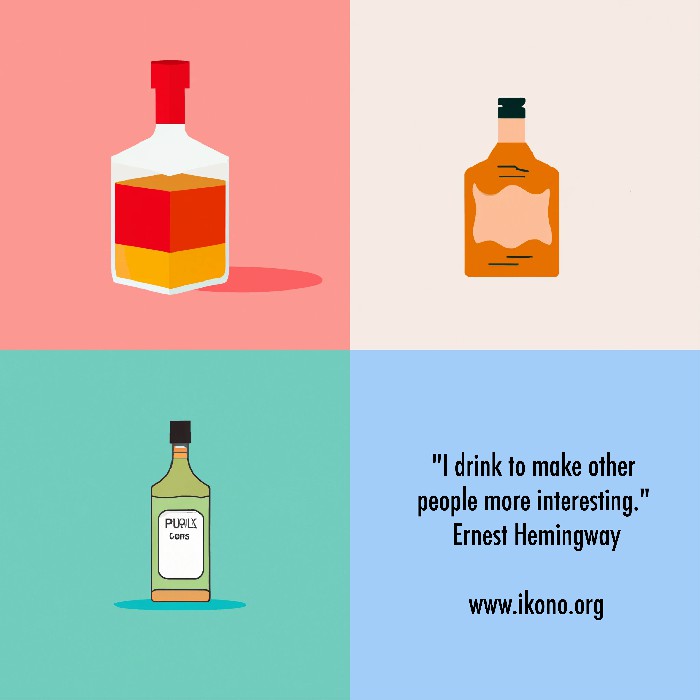
Invest in search engine optimization (SEO) and pay-per-click (PPC) advertising
With consumers increasingly turning to online search to discover and research spirits brands, having a strong online presence is more important than ever. By investing in search engine optimization (SEO) and pay-per-click (PPC) advertising, brands can improve their visibility in search engine results, drive website traffic, and ultimately increase sales. To maximize the effectiveness of their SEO and PPC efforts, brands should focus on optimizing their website for relevant keywords, creating high-quality content, and continually refining their advertising campaigns based on performance data.
Encourage consumer-generated content
User-generated content (UGC) can be a powerful marketing tool for spirits brands, as it leverages the power of social proof to build trust and credibility among consumers. By encouraging consumers to share their experiences with the brand – through reviews, photos, videos, or social media posts – brands can create authentic, engaging content that resonates with their audience. To incentivize UGC, brands can consider running contests, offering rewards, or featuring user-generated content on their website or social media platforms.
In conclusion, by adopting these marketing strategies, spirits brands can create a compelling narrative that captures consumer attention and differentiates them from the competition. By leveraging storytelling, social media, sustainability, partnerships, targeted marketing campaigns, unique experiences, content marketing, innovative packaging, SEO, PPC, and user-generated content, brands can effectively engage with their target audience, build brand loyalty, and drive long-term success in the hard liqueur industry. With a strategic, multifaceted approach to spirits marketing, brands can position themselves at the forefront of the industry and pave the way for continued innovation and growth.
At Ikono we are interested in hearing your liqueur story and help you make it succesfull worldwide!


